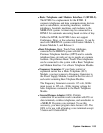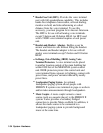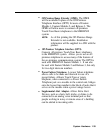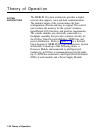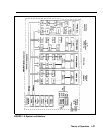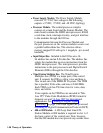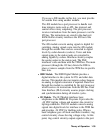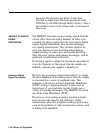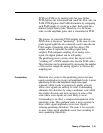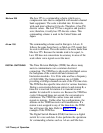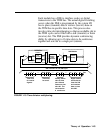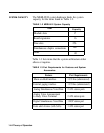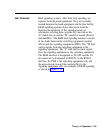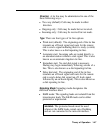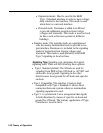
Quantizing
Commanding
PCM uses PAM as its starting point but goes further.
PCM digitizes the information and sends the 8-bit code via
PAM. PCM digitizes the PAM information by comparing
each PAM sample to a point on a chart. Each point has a
distinct 8-digit binary code. Therefore, it is the binary
code, not the amplitude pulse, that is transmitted in PCM.
The process of converting PAM samples into discrete
PCM values is known as “quantizing”. In the case of voice
grade signals eight bits are commonly used to encode one
PAM sample. Quantizing with eight bits allows 256
unique values to represent the analog signal being
sampled. With adequate sampling of an analog voice
signal, the digital product can be toll quality.
The quantizing process creates errors due in part to the
“rounding off” of PAM samples into discrete PCM values.
This distortion can be minimized by increasing the number
of bits used to sample the analog signal or to increase the
sampling rate.
Distortion also occurs in the quantizing process because
equal consideration is given to all amplitude levels. Linear
quantizing divides the amplitude range into equal
segments which results in unnecessary quality at levels
where voice signals are unlikely to occur. Commanding
eliminates this distortion by using a nonlinear scale which
has smaller divisions and more accuracy in areas of the
scale where voice signals are most likely to occur.
Commanding is, in effect, a compression/expansion of the
quantizing scale. This nonlinear scale is more accurate in
areas where signal amplitudes occur most (thereby
reducing quantizing distortion). The scale is less accurate
in areas where signal amplitudes occur least (resulting in
more quantizing distortion).
Theory of Operation 1-41



